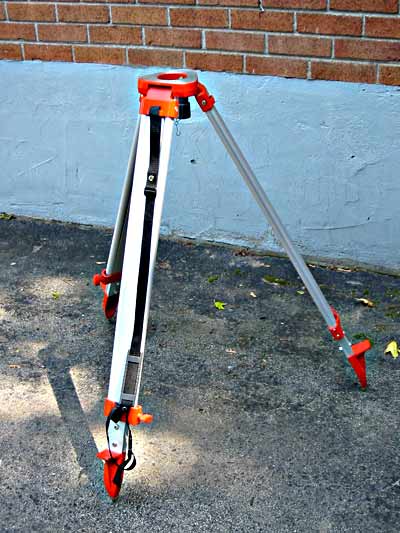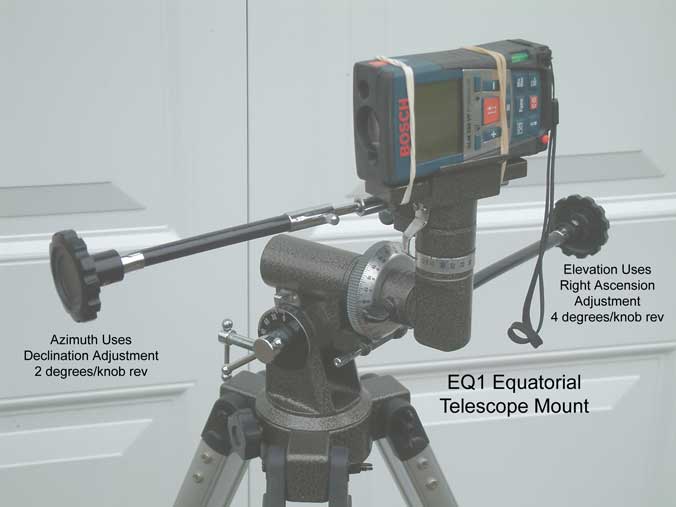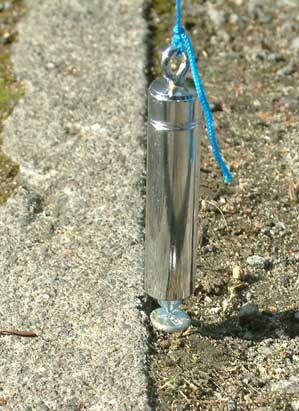Just a year ago in the previous post I showed my set up for using my Bosch Laser Rangefinder on my bike. It worked well. But could I rely on the results? An opportunity to test it against a calibrated tape came up last June.
When David Katz was preparing to come to London to oversee for the IAAF the official measurement of the London Olympic marathon he purchased a new steel tape and had its calibration checked at the NIST in Maryland (
see his post here)
Realising this would be an excellent opportunity to check my laser rangefinder method against a calibrated tape, I took my Bosch Laser and the setup for my bike with me when I went to join David and Hugh Jones for the marathon measurement on 13 June 2012. David and Hugh had measured the calibration course in The Mall before I arrived. After we had finished our measurement ride, I checked the calibration course length with my laser. At first the results were in fair agreement.
While at The Mall for the measurement I was told by David and Hugh that the result from their steel tape measurement was 328.57 m
I went home and worked applied Pythagoras to my raw laser readings to correct for the sloping beam and obtained 328.621 m.
LASER - TAPE = 51 mm 0.015%
This difference was slightly more than the 0.005% to 0.013% error that was claimed by Bosch for the laser, but not by so much to be of concern or cause too much worry about the calibration course length.
When I sent my numbers to Hugh he reported that they had first used the NIST correction for the whole 100m tape rather than the 60m tape lengths which they had used. The corrected NIST calibration steel tape result should be 328.56m.
My initial laser ranger result was 328.621 m.
The difference was getting slightly larger: now LASER - TAPE = 61 mm 0.019%
I asked questions about the steel tape tension and temperature and the correct NIST calibration to use for the Steel Tape.
I was told the Steel Tape was pulled at an estimated 10 lbs. However it was clear from what David told me on the phone after he returned to New York, that the NIST calibration figures which had been so far been applied were for 10 kg tension.
As a result David changed The Mall Calibration Course steel tape result to 328.517 m.
My initial laser ranger result remained at 328.621 m.
The difference was now much worse. LASER - TAPE = 104 mm 0.032%
At this point I became worried about my laser measurement methodology, so I performed a new calibration course layout at home, reproducing the method I had used on The Mall and I photographed every stage. It is written up
here. I worked out some further very small corrections additional to the simple correction for beam slope which I had initially used. I then applied these corrections to the laser result from The Mall. The overall effect was to increase my Mall result by 10 mm. This was principally due to my previous omission of a 12 mm misalignment of the plumb bob with the marker on the road when I was measuring the East end of The Mall cal course. My son Geoffrey, assisting me, had clearly recorded this in my notebook. When we lined up the bike there had been a small offset which we measured and recorded rather than fiddle again with the bike position. Unfortunately the overall effect was to add 10 mm to the laser result and so increase the the difference between tape and laser.
The Mall laser ranger result was initially 328.621 m, now was changed to 326.631 m. Latest steel tape calculation is 328.517 m.
LASER - TAPE = 114 mm 0.034%
At 0.034% the discrepancy was much more then could be explained from the laser manufacturer's figure for error. The effect on the marathon if we were to use the laser result for The Mall calibration would be to reduce the length we had calculated from our measurement rides by 14 m, which was still quite a bit less than the 42 m SCPF, so it would probably not render the marathon short.
However an
unexplained discrepancy of this magnitude would be a worry for me that would prevent me from trusting the laser method in future.
Fortunately the reason became clear early in July when David sent his calculation of the steel tape corrections together with his draft measurement results to Pete Riegel for checking. Pete saw that the tension correction had been applied in the wrong direction.
Mall Calibration Course steel tape result was changed to 328.597 m. Final laser ranger result 328.631 m.
LASER - TAPE = 34 mm 0.010%
The specification for the laser, a Bosch Professional GLM 250VF, is as follows:
In unfavourable conditions (e.g. at intense sunlight or an insufficiently reflecting surface), the maximum deviation is ±20 mm per 150 m. In favourable conditions, a deviation influence of ±0.05 mm/m must be taken into account.This spec is 0.013% in unfavourable conditions and 0.005% in favourable conditions. (There was low sun shining almost perpendicularly on to the target reflector during when I used the laser on The Mall, so it is reasonable to assume that the conditions were somewhat unfavourable.)
This was now a very satisfactory agreement with and NIST calibrated tape. Taken in conjunction with previous comparisons between the laser and my own class 2 steel tape which itself had in the past been compared with several other tapes, I now conclude that the soundness of my laser rangefinder measurement method has been demonstrated beyond all reasonable doubt - at least for my my particular instrument, the Bosch Professional GLM 250VF.
As far as the The Mall Calibration Course we all agreed to take the final steel tape value of 328.597 m as derived
here for the calculation of the marathon course.













